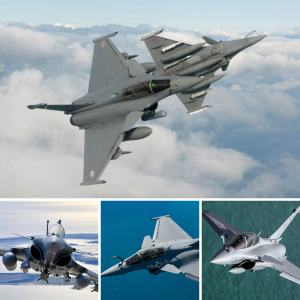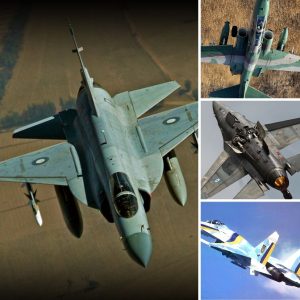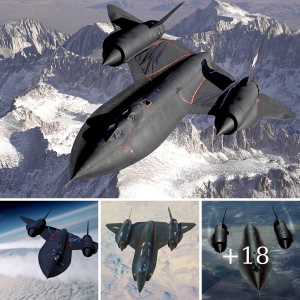In the annals of aviation history, few aircraft have captured the imagination and admiration of both pilots and the public like the SR-71 Blackbird. Nicknamed “Habu” by its crews, the SR-71 was more than just an airplane—it was a symbol of technological supremacy during the Cold War, an unstoppable force that rewrote the rules of reconnaissance and aerial warfare.
A Marvel of Engineering
The SR-71 Blackbird, developed by Lockheed’s legendary Skunk Works division, first took to the skies in 1966. Designed by the brilliant and unconventional Clarence “Kelly” Johnson, the Blackbird was a marvel of engineering, pushing the boundaries of what was possible in aviation. With its sleek, dart-like shape and jet-black exterior, the SR-71 was built to do one thing better than any other aircraft in history: fly faster and higher than any enemy could reach.
Capable of speeds exceeding Mach 3 (more than three times the speed of sound) and an operational ceiling of 85,000 feet, the SR-71 could outrun and outclimb any missile or enemy aircraft. It was so fast that if a threat was detected, the standard evasive maneuver was to simply accelerate and fly higher, leaving any danger far behind.

The Ultimate Spy Plane
During its operational years, the SR-71 played a crucial role in gathering intelligence for the United States. Flying missions over hostile territories, the Blackbird was equipped with advanced sensors and cameras that could capture high-resolution images from incredible altitudes. Despite the countless attempts by enemy forces to shoot it down, not a single SR-71 was lost to enemy action—a testament to its unmatched speed and altitude capabilities.
The Blackbird’s reconnaissance missions were so secretive and vital that even today, many details remain classified. However, its impact on global security during the Cold War is undeniable. The intelligence gathered by the SR-71 helped shape military strategies and provided critical insights into the activities of adversaries.
A Legacy of Speed and Innovation
Although the SR-71 was officially retired in 1998, its legacy continues to inspire awe and innovation. The technologies developed for the Blackbird laid the groundwork for future advancements in aviation and space exploration. Its titanium structure, designed to withstand the extreme temperatures generated by its incredible speed, and its pioneering stealth features influenced the design of many modern aircraft.
The SR-71 Blackbird remains an icon of American ingenuity and determination. Its story is one of daring innovation, relentless pursuit of excellence, and the courage to push the limits of what was thought possible. Even in retirement, the Blackbird continues to soar in the imagination of those who dream of conquering the skies.

The Myth and the Legend
The SR-71 wasn’t just an aircraft; it was a symbol of a nation’s resolve during one of the most intense periods of global tension. Pilots who flew the Blackbird often describe the experience as otherworldly, a testament to the machine’s unique blend of power and grace. Even now, the mere mention of the SR-71 Blackbird conjures images of a sleek, unstoppable machine slicing through the stratosphere at incomprehensible speeds.
For aviation enthusiasts and historians alike, the SR-71 Blackbird will always be more than just a plane. It is the embodiment of speed, stealth, and the relentless pursuit of pushing beyond the possible—a true legend in the skies.






